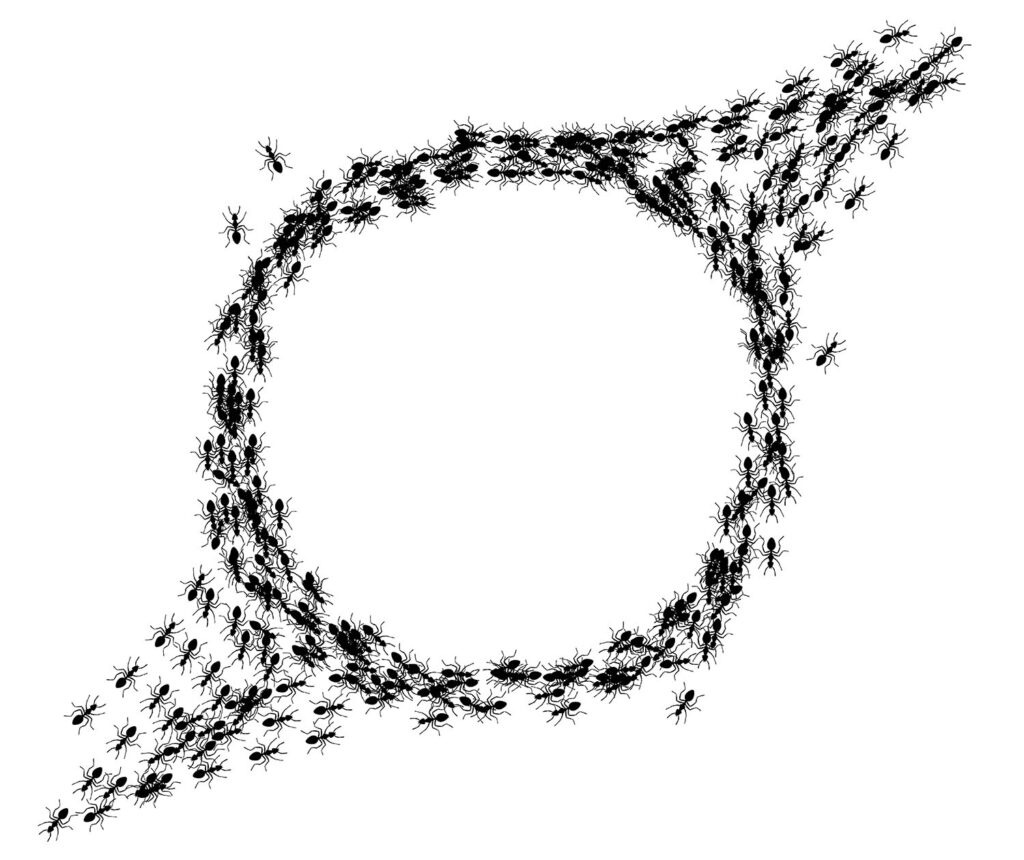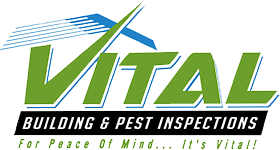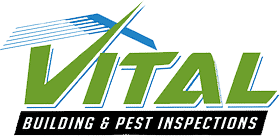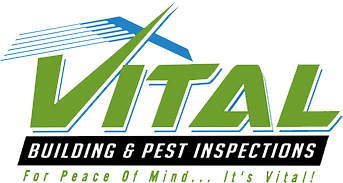Is a pest inspection required by law in Australia

Welcome to Vital Building Inspections Sydney Sydney, a professional and reliable pest inspection company serving the greater Sydney area. As a qualified pest inspector, it is my goal to provide you with the necessary information and services to protect the health and value of your property.
Pest inspections are an important aspect of the home buying and selling process, as pests such as termites, rodents, and cockroaches can cause significant damage to a property and pose a risk to the health and safety of the occupants. In this article, we will discuss the importance of a pest inspection and the benefits of conducting a pest inspection when buying or selling a home in Sydney.
Benefits of a Pest Inspection
A pest inspection can help identify any current or potential pest infestations in the property, allowing you to take the necessary steps to address the issue before it becomes a bigger problem.Pests can carry diseases and cause allergic reactions, so it is important to identify and eliminate any pest issues to protect the health and safety of the occupants.Pest damage can significantly reduce the value of a property, so a pest inspection can help protect your investment by identifying any potential issues that may affect the value of the property.
Is a pest inspection required by law in Australia?
When it comes to the requirement for a pest inspection, there are differences in the regulations across Australia’s states and territories. In this section, we will focus on the specific regulations in New South Wales.
Overview of Australian Building and Pest Inspection Regulations
In Australia, building and pest inspections are not typically required by law, but they may be recommended or required by the lender or requested by the buyer or seller.Some states have specific regulations for the disclosure of pest issues in the home selling process. For example, in Victoria, the seller is required to disclose any known pest issues to the buyer before the sale is final.

Regulations in New South Wales (NSW)
In NSW, there are no specific regulations requiring a pest inspection as part of the home buying or selling process. However, it is common practice for a pest inspection to be conducted as part of a building inspection or as a separate service.The NSW Department of Fair Trading recommends that buyers and sellers consider a pest inspection as part of their due diligence in the home buying or selling process.
While a pest inspection is not required by law in NSW, it is strongly recommended as a means of protecting the health and value of the property. In the next section, we will discuss the benefits of a pest inspection in more detail.
Benefits of a Pest Inspection
A pest inspection can provide several benefits for those buying or selling a home in Sydney, Australia. Some of the key benefits include:
Identifying potential pest infestations
One of the primary benefits of a pest inspection is the identification of any current or potential pest infestations in the property. This allows the buyer or seller to take the necessary steps to address the issue before it becomes a bigger problem. Pest infestations can be difficult to identify, as pests are often hidden in areas that are not visible to the naked eye. A qualified pest inspector has the knowledge and tools to thoroughly inspect the property and identify any potential pest issues.
Protecting the health and safety of the occupants
Pests such as termites, rodents, and cockroaches can pose a risk to the health and safety of the occupants through the transmission of diseases and the potential for allergic reactions. A pest inspection can help identify and eliminate any pest issues to protect the health and safety of the occupants.


Protecting the value of the property
Pest damage can significantly reduce the value of a property, so a pest inspection can help protect your investment by identifying any potential issues that may affect the value of the property. This is especially important for buyers, as pest damage may not always be visible and could be discovered after the purchase of the property.
It is important to note that a pest inspection is not a guarantee that the property is free of pests, but it can provide valuable information and recommendations for pest treatment and prevention. As the Australian Pesticides and Veterinary Medicines Authority (APVMA) states, “a pest inspection is a snap shot in time and should be seen as one tool in the overall pest management process.”
Types of Pests Commonly Found in Australian Homes
Australia is home to a wide range of pests, including insects, rodents, and spiders. In this section, we will discuss some of the most common types of pests found in Australian homes.
Termites
Termites, also known as white ants, are a common pest in Australia and can cause significant damage to the structure of a property if left untreated. Termites are known to infest homes through underground tunnels and can be difficult to detect without a trained eye. It is estimated that termites cause over $1.5 Billion in damage to Australian homes each year
Cockroaches
Cockroaches can be a major concern for buyers and sellers, as they can carry diseases and trigger allergic reactions. Cockroaches are attracted to food and moisture, so it is important to eliminate any sources of these attractants to prevent an infestation.
Bedbugs
Bedbugs are a growing concern in Australia and can be difficult to eliminate once they have infested a property. Bedbugs are small, wingless insects that feed on the blood of humans and animals, and they can be found in beds, furniture, and other areas where people sleep or rest.
Rodents
Rodents such as rats and mice can be a problem in Australian homes, as they are attracted to food sources and can cause damage to the property by gnawing on electrical wires, pipes, and other structures. Rodents can also pose a health risk through the transmission of diseases.
Spiders
While most spiders in Australia are not harmful to humans, some species such as the redback spider and the funnel-web spider can cause serious health issues and should be eliminated if found in the property.
How to Prepare for a Pest Inspection
If you are planning to conduct a pest inspection as part of the home buying or selling process in Sydney, Australia, there are a few steps you can take to prepare for the inspection.
Before the Inspection:
Make sure the property is easily accessible
The pest inspector will need to access all areas of the property, including crawl spaces, attics, and basements. Make sure these areas are clear and accessible to the inspector.
Declutter the property
Remove items such as boxes and clutter from crawl spaces and basements to allow the inspector to fully access these areas.
Repair any visible damage
If you are aware of any visible damage caused by pests, such as holes in walls or ceilings, it is a good idea to repair this damage before the inspection.
Provide a list of any previous pest treatments
If you have previously treated the property for pests, it is helpful to provide the pest inspector with a list of the treatments and the dates they were conducted.


During the Inspection:
If you are planning to conduct a pest inspection as part of the home buying or selling process in Sydney, Australia, there are a few steps you can take to prepare for the inspection.
Be present for the inspection
It is a good idea to be present for the inspection so that you can ask the inspector any questions you may have and get a better understanding of the condition of the property.
Point out any areas of concern
If you have any specific areas of concern, such as a previous pest issue or a damp area, it is helpful to point these out.

How a Pest Inspection is Conducted
A pest inspection is a thorough evaluation of the property to identify any current or potential pest issues. The process typically involves the following steps:
- Visual inspection: The pest inspector will conduct a visual inspection of the property, including the exterior, interior, crawl spaces, attics, and basements. The inspector will look for signs of pests, such as droppings, damage, and nesting materials, as well as potential attractants such as food sources and sources of moisture.
- Use of specialised tools: The pest inspector may use specialised tools such as moisture metres, thermal imaging cameras, and borescopes to identify hidden pests and assess the condition of the property.
- Sampling and testing: The pest inspector may collect samples of pests or pest materials for identification and analysis. The inspector may also test for the presence of pests using methods such as trap placements or bait stations.
- Reporting: The pest inspector will compile a report detailing the findings of the inspection, including any current or potential pest issues and recommendations for treatment and prevention. The report will typically include photographs and descriptions of the identified pests and any damage they have caused.

It is important to note that a pest inspection is not a guarantee that the property is free of pests, but it can provide valuable information and recommendations for pest treatment and prevention. A comprehensive pest inspection can help protect the health and value of the property and provide peace of mind to the buyer or seller.
What is Included in a Pest Inspection Report
A pest inspection report is a detailed document that summarises the findings of the pest inspection and provides recommendations for treatment and prevention. A typical pest inspection report includes the following information:
- Introduction: The introduction of the report typically includes the purpose of the inspection, the scope of the inspection, and the property details.
- Summary: The summary section of the report provides an overview of the inspection findings, including any current or potential pest issues and the severity of the issue.
- Findings: The findings section of the report provides a detailed description of any current or potential pest issues identified during the inspection. This section may include photographs, descriptions of the pests and any damage they have caused, and the location of the pests within the property.
- Recommendations: The recommendations section of the report provides suggestions for treatment and prevention of pest issues. This may include recommendations for pest control methods, repairs, or maintenance to prevent future infestations, and recommendations for ongoing pest management.
- Conclusion: The conclusion of the report summarises the key points of the inspection and provides an overall assessment of the property’s pest status.

It is important to note that the pest inspection report is a snapshot in time and is not a guarantee that the property is free of pests. The report is intended to provide valuable information and recommendations for pest treatment and prevention. A comprehensive pest inspection report can help protect the health and value of the property and provide peace of mind to the buyer or seller.
Pest inspections are an important aspect of the home buying and selling process
as pests such as termites, rodents, and cockroaches can cause significant damage to a property and pose a risk to the health and safety of the occupants. A comprehensive pest inspection can identify any current or potential pest issues and provide recommendations for pest treatment and prevention

If you are buying or selling a home in Sydney, Australia, it is recommended to conduct a pest inspection to protect the health and value of your property. At Vital Building Inspections Sydney Sydney, we provide professional and reliable pest inspections to help you make an informed decision about the condition of the property.
We hope that this article has provided valuable information about the importance of a pest inspection and the benefits it can provide. If you have any further questions or would like to schedule a pest inspection, please do not hesitate to contact us. We look forward to helping you protect your investment and the health of your family.
Frequently Asked Questions
No, a pest inspection is not required by law in Australia. However, some states and territories may have specific requirements for pest inspections in certain situations, such as the sale of a property. It is recommended to check with your state or territory’s real estate or consumer affairs agency for specific requirements.
In some states and territories, a pest inspection may be required as part of the sale of a property. For example, in Victoria, a pest inspection is required for the sale of a property if the property is a house, townhouse, or unit and was built after 1 January 1970. It is recommended to check with your state or territory’s real estate or consumer affairs agency for specific requirements.
A comprehensive pest inspection in Australia typically covers a wide range of pests, including insects (such as termites, cockroaches, and bedbugs), rodents (such as rats and mice), and spiders. The scope of the inspection may vary depending on the specific needs and concerns of the buyer or seller.
The cost of a pest inspection in Australia can vary depending on the size and complexity of the property, as well as the specific services included in the inspection. On average, a pest inspection in Australia can cost between $300 and $500.
The length of a pest inspection in Australia can vary depending on the size and complexity of the property. On average, a pest inspection can take between 2 and 4 hours to complete.
If pests are found during the pest inspection, the inspector will provide recommendations for treatment and prevention. It is important to follow these recommendations.


